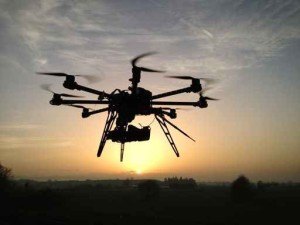
With commercial use of unmanned aerial systems, also known as drones, expected to increase markedly, the door is open for the insurance industry to take on the challenge of insuring this emerging risk. But before insurers can respond to the growing need for drone coverage, they must first understand the laws regulating these UASs and the liabilities they present.
A new white paper from the National Association of Mutual Insurance Companies, “Unmanned Aerial Systems/Drones—Regulation, Liability and Insurance Requirements,” examines the potential commercial uses for drones, proposed regulations from the FAA and potential liability issues insurers will need to address.
Commercial use of drones can maximize efficiency for industries from agriculture to insurance. “Drones can go where people haven’t been able to, or where it isn’t safe for them to be, and they can do things more efficiently and effectively than a person can do,” noted Tom Karol, NAMIC general counsel-federal and author of the white paper.
But while drones can help farmers manage crops and insurers underwrite and handle claims, they also present a number of hazards. “Mechanical things in the sky have a nasty proclivity to sometimes fall in unexpected ways and places,” said Karol. “As the commercial applications of drones continue to grow, so will the potential for crashes, damage, loss and injuries, all of which will carry an added potential for liability.”
Proposed new rules from the Federal Aviation Administration, released Feb. 15, seek to reduce the potential for accidents by placing restrictions on drone size, speed and maximum altitude and to bar small drones from carrying cargo. The FAA rules would also prohibit drones from flying over any persons not directly involved in the operation, as well as require operators to maintain visual line-of-sight with the drone and to obtain special operator licenses.
The NAMIC white paper called the proposed FAA rules a “minimally burdensome, well-reasoned and productive first step in enabling small commercial UAS use,” saying the rules would “reduce the potential for undue hazard to other aircrafts, people or property.” But NAMIC also noted that some commercial uses would be hindered by the proposed rules, which would keep retailers from using drones to deliver packages and could impede operations in more populated areas.
While the proposed rules seek to mitigate the risks posed by commercial drones, they also leave a number of questions unanswered regarding liability.
Even the smallest UAS has the potential to cause significant personal injury or property damage if there is a collision, according to the white paper. But determining liability will require judges to make decisions on a number of practical and legal questions regarding duty, breach, causation and damages.
Among the questions cited by NAMIC’s white paper: What duty does a UAS operator have regarding foreseeable risk to others? After an accident, what determines the extent of operator error versus equipment failure? What constitutes a violation of privacy? Can a person who feels threatened by a drone attack it?
After these and other questions regarding liability are answered, insurers will need to examine the risks and determine what types of UAS coverage they are willing to provide.
Physical Damage or Loss—For larger drones, which can have a value in the tens or even hundreds of thousands of dollars, the white paper suggested that “hull” insurance may be worthwhile. UAS physical damage coverage will apply to loss of, or damage to, the UAS and associated equipment on an agreed value basis. Policies may specify whether the drone is insured both in the air and on the ground, as well as define what types of operations are covered under the policy. Policies may exclude or limit coverage for improper or reckless use, which will need to be defined.
Trespass and Privacy—Policies may include, or specifically exclude, liability for violation of trespass and privacy. The white paper noted that there is no expectation of privacy on public property. On private property, it said, privacy and trespass violations will depend largely on what the FAA deems navigable airspace. While the proposed rules would impose a maximum altitude limit of 500 feet for small drones, there is not currently a mandated minimum altitude. If the FAA deems that navigable airspace includes everything from the ground up, that would practically eliminate private property limits on UASs, the white paper noted.
Cyber—Owners and operators of commercial drones involved in data collection should seek liability coverage for the collection, storage or transmission of protected private and business data, NAMIC’s white paper suggested, as well as for claims resulting from actions such as libel, slander, invasion of privacy and misappropriation. A UAS collecting or storing information can lose, corrupt, inappropriately transmit or have its data hacked/stolen by third parties resulting in liability.
Source: NAMIC white paper, “Unmanned Aerial Systems/Drones—Regulation, Liability and Insurance Requirements,” by Tom Karol, NAMIC general counsel-federal





















 The Hardest Part of Innovation in Insurance Isn’t Technology; It’s Culture
The Hardest Part of Innovation in Insurance Isn’t Technology; It’s Culture  Legal Finance and Insurance: From Confusion to Collaboration
Legal Finance and Insurance: From Confusion to Collaboration  U.S. E&S Outlook No Longer Positive: AM Best
U.S. E&S Outlook No Longer Positive: AM Best  The Latest Launches from Allstate, WTW, Whisker Labs
The Latest Launches from Allstate, WTW, Whisker Labs 










